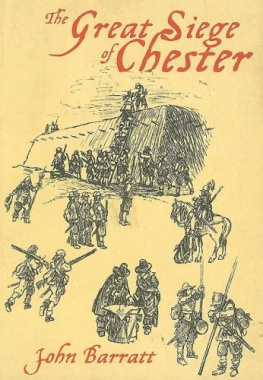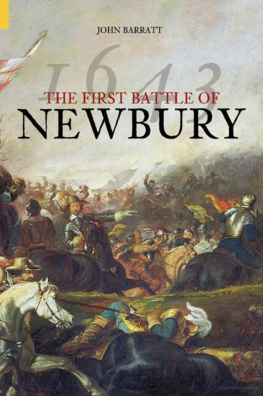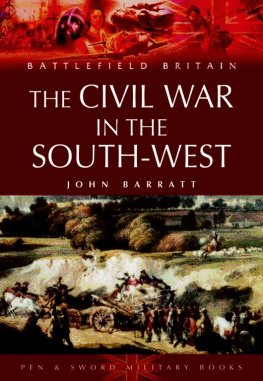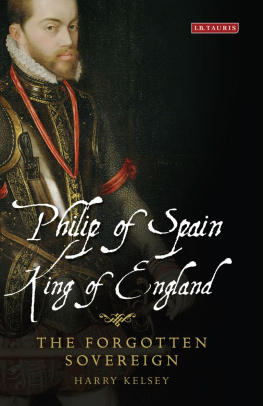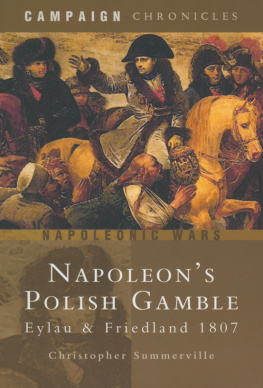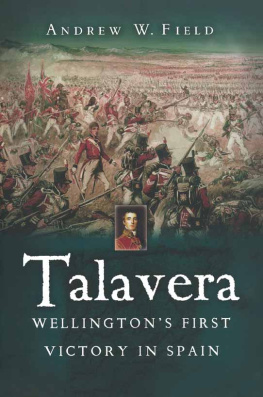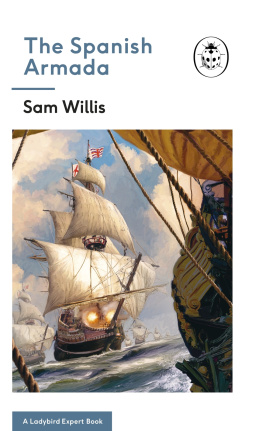
First published in Great Britain in 2005 by
Pen & Sword Military
an imprint of
Pen & Sword Books Ltd
47 Church Street
Barnsley
South Yorkshire
S70 2AS
Copyright John Barratt 2005
ISBN 1-84415-323-1
PRINT ISBN: 9781844153237
EPUB ISBN: 9781844683499
PRC ISBN: 9781844683505
The right of John Barratt to be identified as Authors of the Work has been
asserted by them in accordance with the Copyright, Designs and Patents Act
1988.
A CIP catalogue record for this book is available from the British Library
All rights reserved. No part of this book may be reproduced or transmitted in
any form or by any means, electronic or mechanical including photocopying,
recording or by any information storage and retrieval system, without permission
from the Publisher in writing.
Typeset in Garamond 11/13.5 pt by
Palindrome
Printed and bound in England by CPI UK
For a complete list of Pen & Sword titles, please contact
Pen & Sword Books Limited
47 Church Street, Barnsley, South Yorkshire, S70 2AS, England
E-mail:
Website: www.pen-and-sword.co.uk
List of Illustrations

Figures
Maps

Editors Note

Old Style and New Style Calendars
The sixteenth century saw deep religious divisions across Europe, reflected by the different calendars then in use. Those nations loyal to Rome, including Spain, had adopted the Gregorian calendar named after Pope Gregory XIII (157285) in the 1580s; but Protestant countries, including England, continued to use the Julian calendar for the next 100 years or so: thus remaining ten days behind their Catholic neighbours. In general, the dates in this book are given in the Gregorian mode, but where contemporary English sources use the old Julian form, the Gregorian equivalent is given in brackets with NS, for New Style.
The Weather-Gauge
The windward position (i.e., the side from which the wind is blowing) in relation to another ship or fleet. Gaining the weather-gauge was a crucial combat advantage to the sailing ships of the day, offering, as it did, increased speed and manoeuvrability.

Background

Little more than thirty years before the Armada sailed in 1588, few would have anticipated war between England and Spain. The earlier Tudor monarchs had maintained amicable relations with their Spanish counterparts, united by distrust of their common neighbour, France.
Relations were strained when Henry VIII divorced his Spanish wife, Catherine of Aragon, and in defiance of the pope established the Church of England with himself as its head. But the accession of his eldest daughter, the devoutly Catholic Mary, in 1553 not only brought England back to Rome but in 1554 seemed to herald the union of the two kingdoms when King Philip II of Spain married Queen Mary.

Propaganda: a typical depiction of religion-inspired atrocities, in this case perpetrated by Protestants.

Philip II (152798). The kings austere style of dress reflects the increasing rigour of his outlook in the later years of his reign.
However, the Spaniards were generally unpopular in England, and the loss in 1558 of Calais as a result of English involvement in Spains war with France soured relations still further, while the death of the still childless Mary spelt the end of any faint chance of an Anglo-Spanish union.
Half-hearted proposals that Philip marry Englands new ruler, the former Princess Elizabeth, daughter of Henry VIII and his second wife, Anne Boleyn, came to nothing, but for some years relations between England and Spain, while growing cooler, seemed unlikely to degenerate into war. The situation, however, gradually changed.
Deepening Conflict
By the 1560s Philip II was ruler of a vast empire, including Spain, Naples, Sicily, the East Indies, possessions in the Americas and the Netherlands. The Spanish economy was increasingly dependent upon the resources of her New World settlements, particularly their gold and silver, but English traders quickly moved to exploit the opportunities presented by Spanish America, finding ready markets for their merchandise. Philip resented this, and on occasion took bloody action against those attempting to break Spanish monopolies in the region. In 1568 Spanish warships at San Juan dUlloa surprised and captured most of a squadron of English trading ships commanded by John Hawkins, merchant and slaver, and his young kinsman, Francis Drake.

Elizabeth I (15331603). A depiction of the queen in the later years of her reign, which is probably a more realistic impression than some of the more idealised portraits of Elizabeth.
The subsequent uproar in England forced Elizabeth to retaliate. Other factors were also troubling the queen and her ministers. In 1566, the northern, predominantly Protestant, Dutch provinces of the Netherlands had rebelled against Spain, and though the revolt had been bloodily crushed by the Duke of Alba, tensions remained high. Elizabeth whose desire not to make windows upon mens hearts and secret thoughts had a deep distrust of all rebels, but she gave some indirect aid to the Dutch by seizing Spanish ships carrying 160,000 ducats, intended as pay for the Spanish Army of Flanders. This act was ostensibly a reprisal for the attack on Hawkins.
Pirates and Privateers
T he exploits of Francis Drake, Walter Raleigh, and other Elizabethan seadogs on the Spanish Main are often seen as one of the more romantic aspects of the Anglo-Spanish war. The reality was often rather different.
The legal definitions of a privateer someone licensed by a government to operate against that countrys enemies and a pirate a freebooter who preyed more or less indiscriminately on shipping of various nationalities often became blurred. This was due, in part, to a degree of ambivalence of the part of Elizabeth towards her privateers, which was reciprocated, in turn, by the seadogs themselves.
The first raiders to operate against Philip IIs possessions in the New World were French, with English seamen originally present in the region as traders not joining the onslaught till after the Spanish attack on John Hawkins squadron at San Juan dUlloa in 1569. It was with the proclaimed intention of seeking revenge for this assault that Francis Drake and a number of other adventurers began attacks on Spanish settlements and shipping during the 1570s.
The uncertain legal status of these raiders was underlined by the surreptitious financial backing in return for a major share of the profits sometimes given by the queen, and more openly by consortiums of gentry and merchants. For most of the decade following 1570, however, despite the headline-stealing exploits of Francis Drake, English privateering operations in the Caribbean were conducted on a fairly small scale, with minimal impact.
Next page

